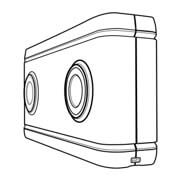Google’s VR180
VRPlayin is excited about the recent announcement about Google launching a new cinematic VR format that should be as accessible as YouTube videos for consumers. Their new launch is called VR 180. VR 180 is a collaboration between Youtube and Google Daydream VR along with a new production of a new line of cameras from Yi, Lenovo, and LG and many other partners that have VR 180 certification standards.
What is VR 180?
As it suggests in its name, VR 180 does not allow the viewer to be submersed in a world as it does not stretch all the way around you. Rather, VR 180 is supposed to be immersive only if you’re facing forward, it does not allow the ability to turn and glance behind you. This may not be as immersive as some people would like. Outside of the new VR technology from Google, videos will appear as traditional videos, but they can be easily turned into a 3D VR video with the YouTube app, and either a Google Cardboard, Daydream, or PlayStation VR headset. For a video to see how Google’s VR 180 will work check out https://vr.google.com/vr180/
Filming for VR 180
Creators of videos for VR 180 will be able to film video using any VR 180 certified camera. Google is working with the three companies previously mentioned and are planning to release the first of their products this winter (2017). These cameras are rumored to be the same price of a point and shoot camera, but we will see if that holds true at the launch. The only image of this first product by Lenovo is a line drawing that appears to have two wide-angle lenses that can shoot stereoscopic video, and it’s far off from the alien orbs (a camera by Nokia) that are often seen being used for VR films.

The Advantages of VR 180
Although shooting 180 degrees seems less impressive than being able to capture the full 360 degrees, it does have a few big advantages. First, it does not need the same stitching of videos, which can be very time consuming, as with Google’s 360 degree Jump System. This 180 VR technology allows you to put a person behind the camera without them appearing in the shot, unlike the 360 degree camera where people would literally have to hide in shots behind props to not be seen. Second, this pushes down the file size so viewers will not have as much buffering time, also making the idea of VR on the web a bit more foreseeable. Many VR films have been with a 180 degree field of view, and mixed experiences came from this, but it might be worth it if it can lower the bar for YouTube videographers. VR 180 is further from the goal of being immersive than 360 degrees, but it allows filmmakers to translate a video to a flat screen more easily. To quote the Verge, “Google is taking a step back and hoping more filmmakers can catch up,” and it appears to be very true.
Do you think VR 180 will be as successful or as loved as VR 360? Or does one stand a much better chance in pleasing the viewers and consumer of VR?